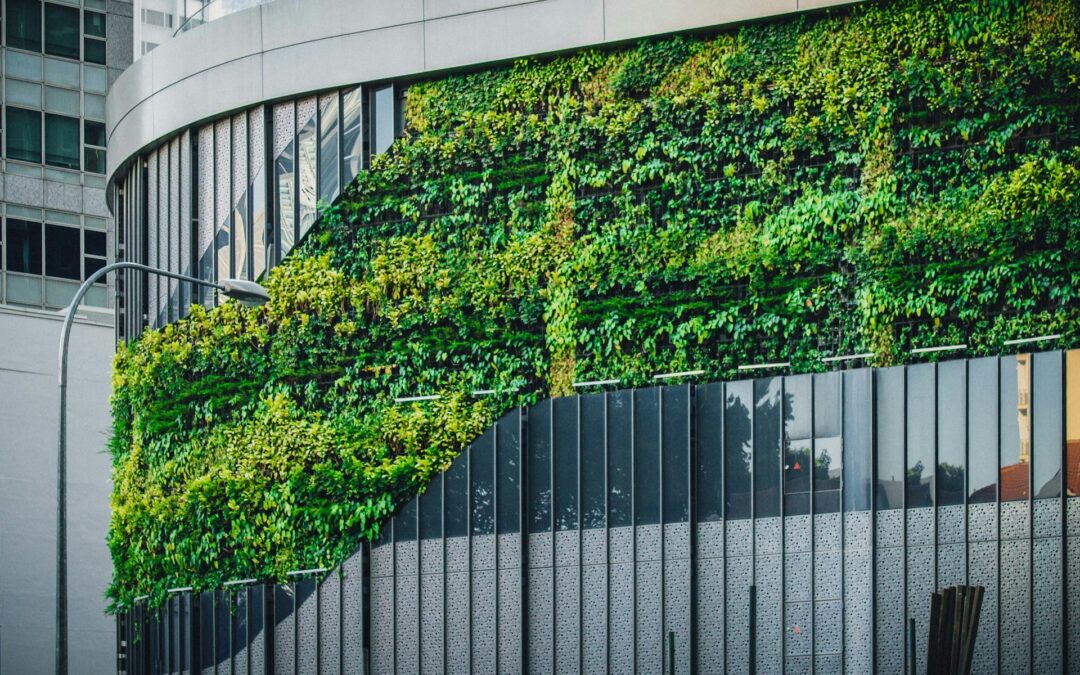The pursuit of a sustainable built environment is heavily dependent on our ability to create structures that minimize their impact on the environment while maximizing energy efficiency. Net zero building design, a concept that envisions buildings as self-sufficient entities producing as much renewable energy as they consume, is a powerful step towards this goal. Archiplex Group, a full-service architectural firm in Salt Lake City, Utah, specializes in creating innovative, energy-efficient building designs that merge aesthetics and functionality with a keen focus on sustainability and environmental responsibility.
Net zero building design encompasses all aspects of architectural planning and construction, including energy-efficient building envelopes, high-performance systems, and renewable energy technologies. By integrating innovative design strategies, advanced building materials, and state-of-the-art technology, net zero buildings significantly reduce – or even eliminate – their reliance on non-renewable energy, dramatically decreasing their carbon footprint and fostering a more sustainable built environment.
In this article, we explore the principles of net zero building design, the strategies for achieving net zero energy goals, and how Archiplex Group’s expertise in sustainable architecture and planning can empower clients to realize the benefits of energy-efficient, environmentally responsible buildings. Join us as we embark on a journey to discover the transformative potential of net zero building design and how Archiplex Group is pioneering its future through exceptional architectural practices that prioritize sustainability and ecological stewardship.
Fundamentals of Net Zero Building Design
Net zero building design is grounded in the concept of reducing energy consumption by leveraging innovative architectural strategies, efficient building systems, and renewable energy technologies. The fundamentals of net zero building design include the following:
- Energy-Efficient Building Envelope: Net zero buildings require an energy-efficient building envelope that minimizes thermal transfer, reducing heat loss in the winter and heat gain in the summer, and maintaining a consistent indoor temperature with minimal energy input.
- High-Performance Systems: Net zero buildings incorporate high-performance heating, ventilation, and air conditioning (HVAC) systems, as well as energy-efficient lighting, appliances, and other equipment to minimize energy consumption.
- Renewable Energy: To balance their energy needs, net zero buildings produce clean, renewable energy through on-site or off-site generation methods, such as solar panels, wind turbines, or geothermal systems.
- Smart Building Technologies: Net zero buildings often incorporate smart building technologies, such as automated lighting, temperature, and shade controls, to intelligently optimize energy use and enhance occupant comfort.
Archiplex Group’s Net Zero Building Design Process
Archiplex Group employs a comprehensive, integrated approach to net zero building design that combines advanced architectural strategies with cutting-edge technology. Their process involves:
- Sustainable Site Selection and Design: Archiplex Group carefully considers site conditions, such as solar orientation, prevailing winds, and local climate, to reduce energy consumption through passive design strategies, such as natural cooling, heating, and daylighting.
- Energy Modeling and Analysis: Using powerful energy simulation tools, Archiplex Group creates detailed energy models for each project to analyze and optimize energy use, explore efficiency measures, and identify renewable energy opportunities.
- Advanced Building Materials and Techniques: Archiplex Group employs the use of advanced building materials, such as high-performance insulation, triple-glazed windows, and thermally optimized building envelopes, to minimize energy consumption and maintain a comfortable indoor environment.
- Renewable Energy Integration: Archiplex Group seamlessly integrates renewable energy generation technologies, such as solar panels or wind turbines, into the overall design, catering to the energy needs of the building while remaining visually and functionally harmonious.
Achieving Net Zero Energy: Strategies and Technologies
To transform a conventional building into an energy-efficient, net zero structure, several key strategies and technologies are employed. Some of these include:
- Passive Design: Buildings designed using passive strategies, such as optimizing solar orientation, maximizing daylighting, and utilizing natural ventilation, can significantly reduce their energy needs by taking advantage of the site’s natural characteristics.
- Building Envelope Upgrades: Upgrading the building envelope by using insulated wall systems, high-performance windows, and improved air sealing techniques can dramatically reduce heat transfer, conserve energy, and increase occupant comfort.
- HVAC System Optimization: Retrofitting or replacing outdated HVAC systems with high-efficiency models and integrating advanced control systems can significantly reduce energy use while maintaining comfortable temperature and humidity levels.
- On-site Renewable Energy: The integration of on-site renewable energy technologies, such as solar photovoltaic panels, wind turbines, or geothermal heat pumps, allows buildings to generate clean, renewable energy, helping offset their energy consumption.
Real-Life Examples of Net Zero Building Design by Archiplex Group
Archiplex Group’s commitment to sustainable architecture and net zero building design is evident in their myriad projects that showcase the remarkable potential of energy-efficient, environmentally responsible buildings. Some examples of their net zero building design work include:
- Net Zero Commercial Buildings: Archiplex Group’s expertise in net-zero design principles extends to commercial projects, including office spaces and retail centers, that balance energy-efficient solutions with functional and aesthetically pleasing designs.
- Net Zero Educational Facilities: With a focus on sustainability and energy efficiency, Archiplex Group creates inspiring, future-focused educational facilities that serve as powerful demonstrations of environmental stewardship for students and communities.
- Net Zero Residential Projects: Through expert design and planning, Archiplex Group crafts sustainable, energy-efficient homes that minimize environmental impact without compromising on comfort, style, or functionality.
Build a Sustainable Future with Archiplex Group
Net zero building design represents a crucial step towards promoting energy-efficient, sustainable, and environmentally responsible architecture. Archiplex Group’s expertise in sustainable design and net zero building principles empowers clients to envision and create future-ready structures that significantly contribute to a greener, more resilient world.
Embark on your journey towards a sustainable, energy-efficient built environment by teaming up with Archiplex Group, the expert architectural firm dedicated to creating net-zero buildings that prioritize innovative design, responsible resource use, and a lasting positive impact on both the environment and future generations.

